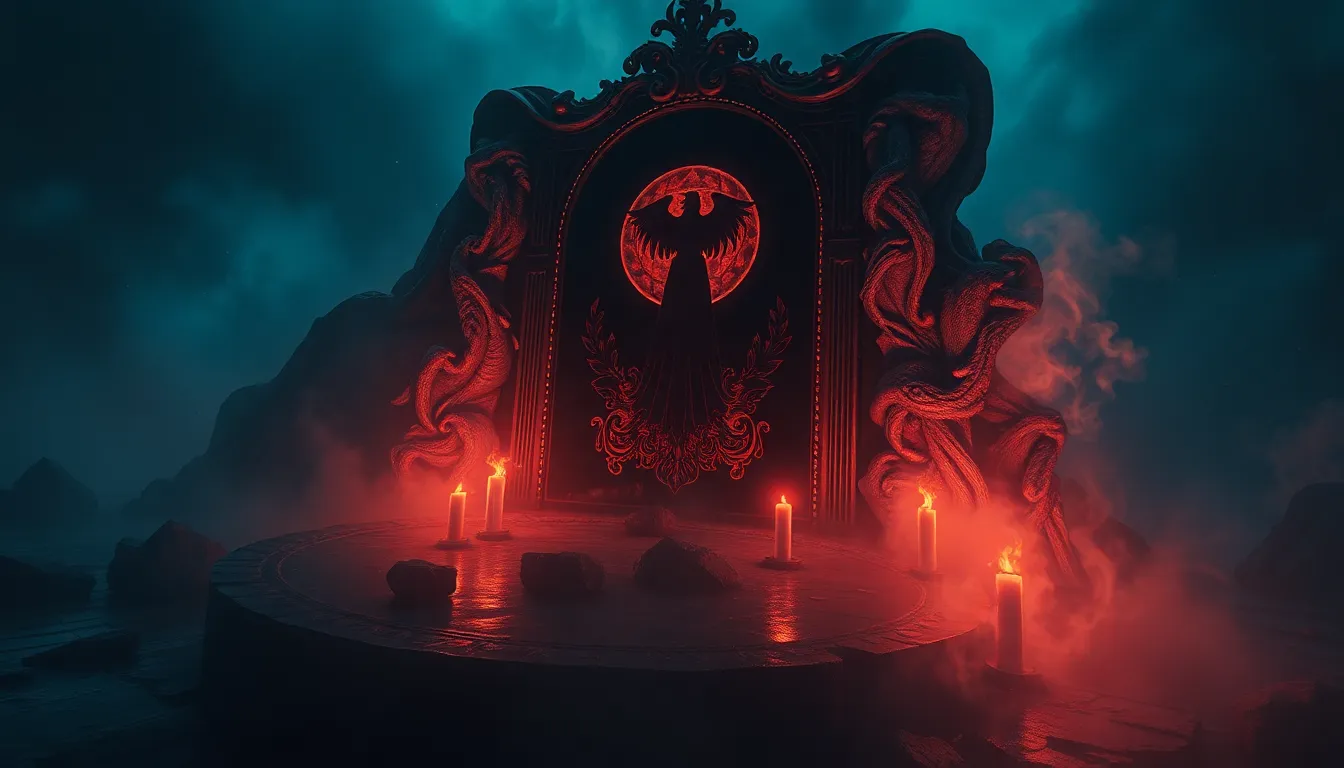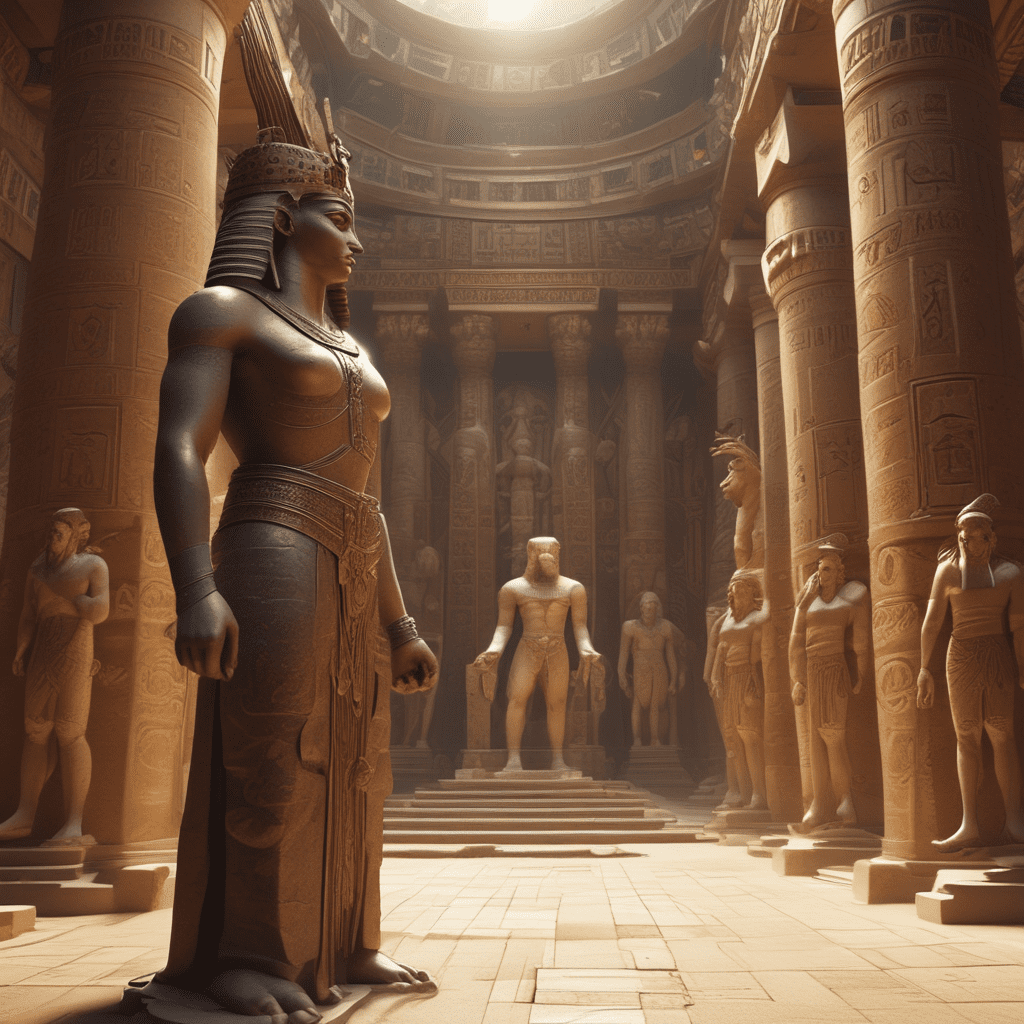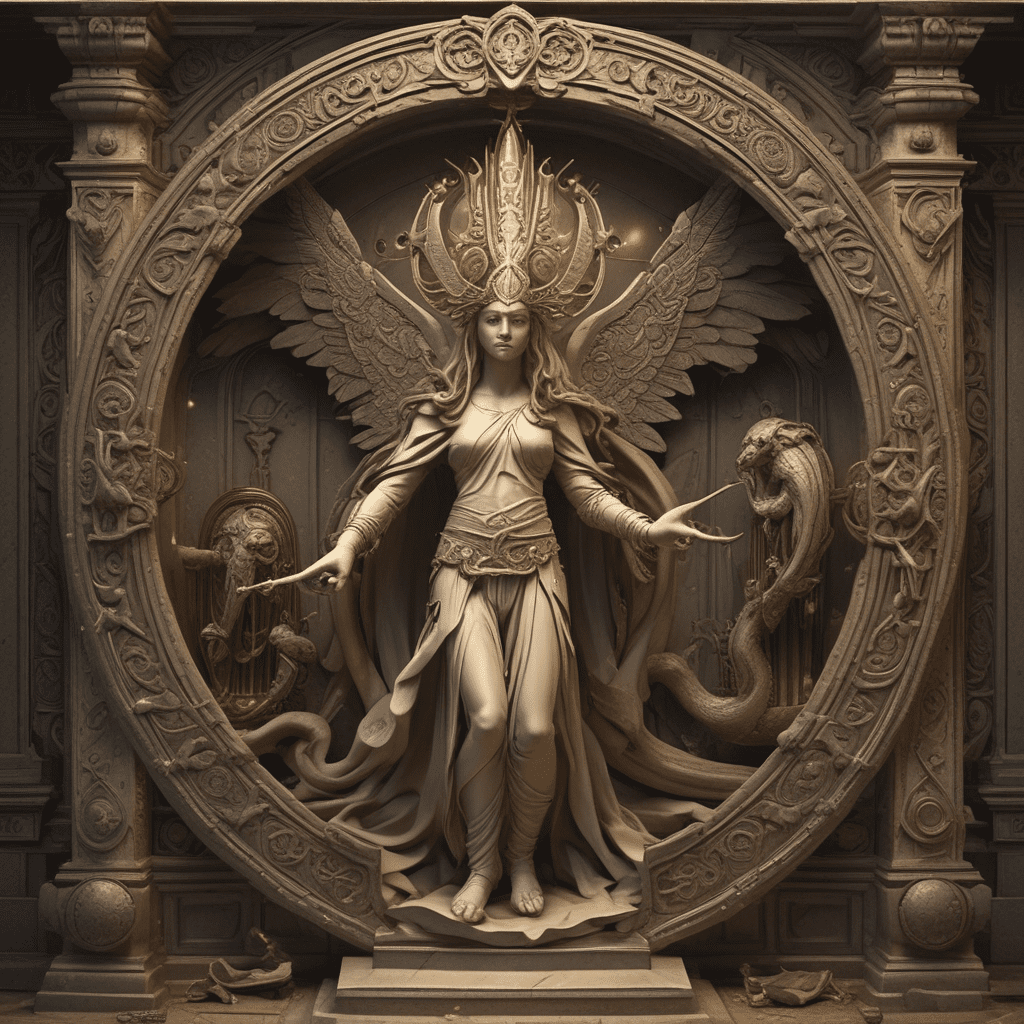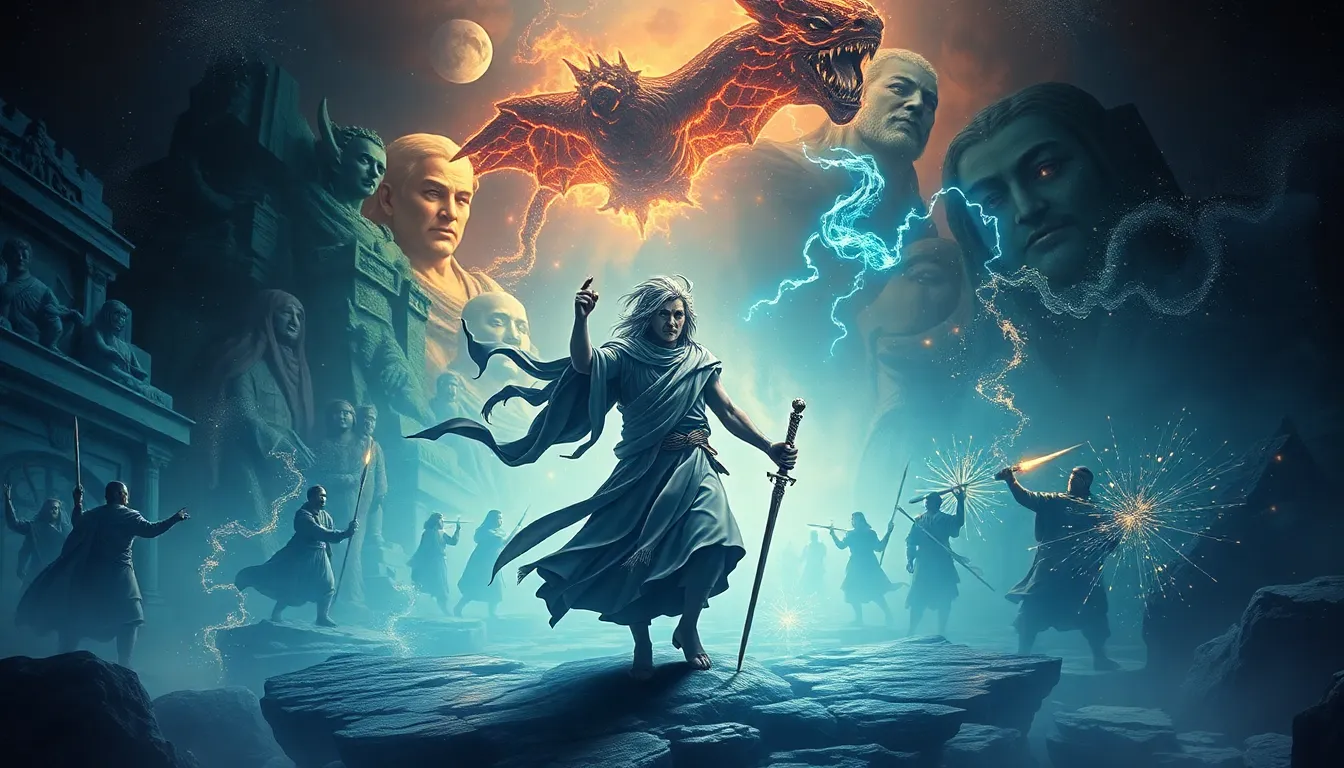The Legend of the Cursed Mirror: Reflections of the Damned
I. Introduction
The legend of the cursed mirror weaves a haunting tale that has captivated imaginations across generations. This narrative not only entertains but also serves as a cautionary tale about the dangers lurking within ourselves and our reflections. The significance of mirrors in folklore is profound, representing more than just a surface to view one’s physical appearance; they often symbolize deeper truths and hidden fears.
This article aims to explore the various facets of the cursed mirror legend, from its historical origins to its modern interpretations, while examining its psychological implications and cultural relevance.
II. Historical Origins of the Cursed Mirror
A. Historical Context and Cultural Significance
Throughout history, mirrors have played a significant role in various cultures, often associated with the supernatural. In ancient civilizations, such as the Egyptians and Greeks, mirrors were believed to hold mystical properties, reflecting not just images but also souls.
B. Early Accounts and Anecdotes
Early accounts of cursed mirrors often mention tragic events or malevolent spirits connected to the objects. In medieval Europe, for instance, mirrors were seen as gateways to the other world, prompting fear and superstition among the populace.
C. Evolution of the Legend Over Time
As societies evolved, so did the legend of the cursed mirror. The narrative adapted to reflect contemporary fears and anxieties, morphing from tales of witchcraft and sorcery to more modern interpretations involving psychological horror.
III. The Legend’s Central Narrative
A. Description of the Cursed Mirror
The cursed mirror is often described as an ornate, antique object, adorned with intricate carvings and an unsettling aura. Its surface reflects not just the physical form of the beholder but also hints at their inner darkness.
B. Key Figures and Characters in the Legend
Key characters typically include:
- The original owner, often a tragic figure who met a grim fate.
- The unsuspecting victim who encounters the mirror.
- The supernatural entity or curse that haunts the mirror.
C. The Curse: How It Came to Be
The curse usually stems from a tragic event, such as betrayal, murder, or a pact made with dark forces. This history imbues the mirror with malevolent energy, ensnaring anyone who gazes into it.
IV. Symbolism of the Cursed Mirror
A. Mirrors as Portals to Other Realities
In folklore, mirrors are often seen as portals to alternate realities or dimensions. They allow glimpses into worlds where the boundaries of life and death blur.
B. Reflection and Identity: The Psychological Aspect
Mirrors reflect not only our physical selves but also our identities and insecurities. The cursed mirror amplifies these aspects, forcing individuals to confront their inner demons.
C. The Role of Darkness and Evil in the Reflection
The darkness reflected in the cursed mirror symbolizes the hidden fears and malevolence that reside within every individual. It serves as a reminder of the potential for evil that exists in all of us.
V. Variations of the Legend Across Cultures
A. Cursed Mirrors in Different Cultures
Various cultures have their own versions of the cursed mirror legend. For instance:
- In Japanese folklore, the mirror is linked to the Shinto goddess Amaterasu, symbolizing light and darkness.
- In Western traditions, mirrors often serve as portals to the supernatural, representing vanity and the consequences of pride.
B. Comparative Analysis of Similar Legends
Across cultures, the cursed mirror often shares common themes, such as the idea of reflection revealing one’s true self or the fear of facing the unknown.
C. Cultural Interpretations of Evil Reflections
Each culture interprets the evil reflection differently, influenced by local beliefs and societal norms, showcasing the universal fear of confronting one’s darker side.
VI. The Cursed Mirror in Popular Culture
A. Depictions in Literature and Film
The cursed mirror has made its way into various forms of popular culture, from gothic literature to contemporary horror films. Notable works include:
- Through the Looking-Glass by Lewis Carroll
- The horror film Oculus that features a cursed mirror with a dark history.
B. Influence on Modern Horror Genre
The legend has significantly influenced the modern horror genre, providing a rich source of material for exploring themes of fear, identity, and the supernatural.
C. Analysis of Iconic Works Inspired by the Legend
Iconic works often depict mirrors as instruments of horror, revealing hidden truths or unleashing malevolent forces, resonating with audiences’ fears and curiosities.
VII. The Psychological Impact of the Cursed Mirror
A. Fear and Superstition Surrounding Mirrors
Mirrors have long been associated with superstition. Many cultures believe breaking a mirror brings seven years of bad luck, illustrating the deep-seated fears surrounding reflections.
B. The Mirror’s Role in Self-Perception and Anxiety
Mirrors play a crucial role in how individuals perceive themselves, often leading to anxiety and self-doubt, especially when confronted with an unsettling reflection.
C. Case Studies: Real-Life Experiences with Mirrors
Numerous individuals have reported eerie experiences involving mirrors, from seeing figures in their reflections to feeling a sense of dread when gazing into one.
VIII. The Scientific Perspective on Mirrors and Illusions
A. Optical Physics of Mirrors
From a scientific standpoint, mirrors function through the reflection of light, creating the illusion of depth and reality. This fundamental principle underpins the psychological effects they have on observers.
B. Psychological Explanations for Perceived Supernatural Experiences
Psychologists suggest that perceived supernatural experiences with mirrors may stem from cognitive biases, pareidolia, or the brain’s tendency to find patterns in randomness.
C. Debunking Myths: What Science Says About the Cursed Mirror
While the legends surrounding cursed mirrors are compelling, scientific inquiry often debunks the myths, attributing experiences to psychological phenomena rather than actual curses.
IX. Contemporary Relevance of the Legend
A. The Legend in Modern Society
In today’s digital age, the legend of the cursed mirror continues to resonate, reflecting societal anxieties about identity, self-image, and the consequences of our actions.
B. Reflections on Morality: Lessons from the Legend
The cursed mirror serves as a metaphor for moral reflection, encouraging individuals to confront their choices and the impact of those choices on themselves and others.
C. The Cursed Mirror as a Metaphor for Personal Struggles
In a broader sense, the cursed mirror can symbolize the internal struggles many face, representing the battle between light and darkness within each person.
X. Conclusion
A. Summary of Key Points
The legend of the cursed mirror intricately weaves themes of fear, identity, and morality. It showcases the deep psychological connection people have with their reflections and the darker aspects of the self.
B. The Enduring Nature of the Legend
Despite the advances of science and rational thought, the legend endures, reminding us of our fears and the complexities of human nature.
C. Final Thoughts on Reflections and Realities
Ultimately, the cursed mirror serves as a poignant metaphor for our own reflections—both the light and the darkness that coexist within us, challenging us to confront our true selves.



